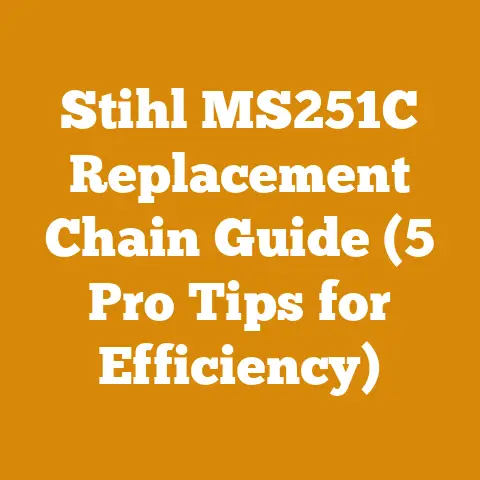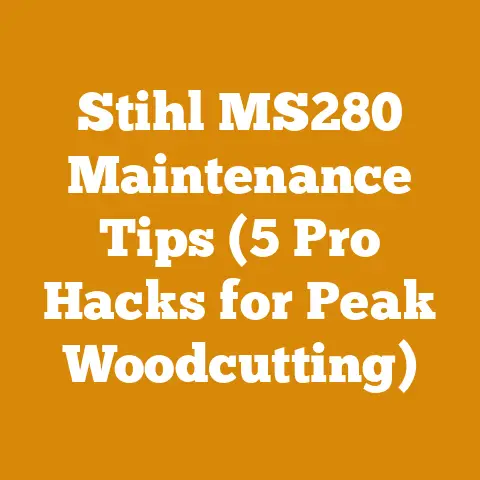What Size Zero Turn Do I Need? (Expert Tips for Woodland Care)
What Size Zero Turn Do I Need? (Expert Tips for Woodland Care)
As someone who’s spent the better part of my life working with wood, from felling trees to crafting furniture and preparing firewood, I understand the deep connection between humans and the land. Sustainability isn’t just a buzzword for me; it’s a way of life. This means managing our woodlands responsibly, and that includes choosing the right tools for the job. But with so many models available, how do you determine the right size for your needs? Let’s dive in.
Understanding Your Woodland: The Foundation of Your Decision
Before even thinking about deck sizes or horsepower, I emphasize taking a good, hard look at your property. This isn’t just about aesthetics; it’s about making an informed decision that will save you time, money, and frustration in the long run.
- Property Size: This is the most obvious factor. Larger properties generally benefit from larger decks, allowing you to cover more ground with each pass.
- Terrain: Is your land flat and open, or is it hilly and filled with obstacles like trees, rocks, and shrubs? Uneven terrain and obstacles call for more maneuverability and potentially a smaller, more agile mower.
- Obstacles: The density and type of obstacles significantly influence the size and type of mower you need. Think about the number of trees, flowerbeds, or other landscape features you’ll be navigating around.
- Desired Finish: Are you aiming for a pristine, manicured lawn, or are you simply trying to keep the undergrowth under control? A rougher cut might be acceptable for less formal areas, allowing you to prioritize speed and efficiency over perfection.
- Budget: Zero-turn mowers can range in price from a few thousand dollars to upwards of ten thousand. Setting a realistic budget will help you narrow down your options.
- Storage: Consider where you’ll be storing your mower when it’s not in use. A larger mower will require more storage space.
Personal Story: I once advised a friend who had recently purchased a 5-acre property to get the biggest, most powerful zero-turn he could afford. He envisioned perfectly manicured lawns. He ended up regretting it. The mower was too large to navigate the dense patches of trees and the uneven terrain near the creek. He ended up selling it and buying a smaller, more maneuverable model. This experience taught me the importance of truly understanding the terrain and obstacles before making a purchase.
Zero-Turn Mowers: Key Features and Considerations
Zero-turn mowers are designed for speed and maneuverability. Unlike traditional lawn tractors, they use independent hydraulic transmissions to power each rear wheel, allowing them to turn 180 degrees without leaving a circle of uncut grass. This feature makes them ideal for navigating around obstacles and mowing in tight spaces.
- Deck Size: The deck size refers to the width of the mower deck, which determines the width of the cut. Common deck sizes range from 32 inches to 72 inches.
- Engine Power (Horsepower): Engine power determines the mower’s ability to cut through thick grass and navigate hills. Higher horsepower is generally better for larger properties and challenging terrain.
- Fuel Capacity: Consider the fuel capacity of the mower, especially if you have a large property. A larger fuel tank will allow you to mow for longer periods without refueling.
- Comfort: Look for features like a comfortable seat, armrests, and ergonomic controls. You’ll be spending a lot of time on your mower, so comfort is essential.
- Durability: Choose a mower from a reputable brand with a reputation for durability and reliability. Look for features like a heavy-duty frame and high-quality components.
- Warranty: A good warranty can provide peace of mind and protect you from unexpected repair costs.
- Cutting Height Adjustment: The ability to adjust the cutting height is important for achieving the desired finish and adapting to different types of grass.
- Mulching Capability: Some zero-turn mowers offer mulching capabilities, which can help to fertilize your lawn and reduce the need for chemical fertilizers. Mulching mowers finely chop grass clippings and return them to the lawn as fertilizer. This reduces waste and enriches the soil.
- Bagging System: If you prefer to collect your grass clippings, look for a mower with a bagging system. This can be useful for preventing thatch buildup and creating a cleaner look.
- Side Discharge: Most zero-turn mowers feature side discharge, which ejects the grass clippings to the side. This is a good option for larger properties where you don’t mind leaving the clippings on the ground.
Deck Size: Finding Your Perfect Fit
The deck size is arguably the most important factor to consider when choosing a zero-turn mower. It directly impacts the mower’s efficiency, maneuverability, and overall suitability for your property.
- 32-42 Inch Decks: These smaller decks are ideal for properties up to 1 acre with many obstacles. They are highly maneuverable and can easily navigate tight spaces. They are also a good choice for properties with hilly terrain.
- 42-54 Inch Decks: These mid-sized decks are suitable for properties between 1 and 3 acres with moderate obstacles. They offer a good balance of efficiency and maneuverability.
- 54-60 Inch Decks: These larger decks are best for properties between 3 and 5 acres with few obstacles. They can cover a lot of ground quickly, making them ideal for large, open areas.
- 60-72 Inch Decks: These extra-large decks are designed for properties over 5 acres with minimal obstacles. They are the most efficient option for large properties, but they can be difficult to maneuver in tight spaces.
Data Point: In my experience, a 48-inch deck is a sweet spot for many homeowners with properties between 1 and 2 acres. It provides a good balance of efficiency and maneuverability, allowing you to mow your lawn quickly and easily.
Horsepower: Powering Through the Task
Horsepower is another crucial factor to consider, as it determines the mower’s ability to handle thick grass, hills, and other challenging conditions.
- Under 20 HP: These engines are suitable for smaller properties with flat terrain and thin grass.
- 20-25 HP: These engines are a good choice for properties with moderate terrain and grass thickness.
- Over 25 HP: These engines are necessary for larger properties with hilly terrain, thick grass, and demanding conditions.
Original Insight: Don’t underestimate the importance of having enough horsepower. A mower with insufficient power will struggle to cut through thick grass, especially when it’s wet. This can lead to a poor cut quality and increased wear and tear on the engine.
Woodland Specific Considerations: Beyond the Lawn
When caring for woodland areas, the considerations extend beyond just maintaining a manicured lawn. You’re dealing with a more natural, often less uniform environment.
- Rough Terrain: Woodland areas often have uneven terrain, including roots, rocks, and fallen branches. Choose a mower with good ground clearance and durable tires to handle these conditions.
- Dense Vegetation: You may need to cut through thick brush, weeds, and saplings. Look for a mower with a powerful engine and a heavy-duty deck that can handle these tough materials.
- Maneuverability: Woodland areas often have tight spaces and obstacles that require a highly maneuverable mower. A zero-turn mower with a smaller deck size is often the best choice for these conditions.
- Mulching: Mulching is a great way to return nutrients to the soil and suppress weed growth in woodland areas. Choose a mower with a good mulching capability.
- Safety: Safety is always paramount, but it’s especially important when mowing in woodland areas. Wear appropriate safety gear, including eye protection, hearing protection, and sturdy boots. Be aware of your surroundings and watch out for hidden obstacles.
Case Study: Transforming an Overgrown Woodlot
I once helped a client reclaim a neglected woodlot that had become overgrown with brush, weeds, and saplings. The client wanted to create a more park-like setting where they could enjoy nature and have picnics.
We started by clearing out the larger trees and branches that were blocking access to the area. Then, we used a zero-turn mower with a 48-inch deck and a 24-horsepower engine to cut through the remaining vegetation. The mower’s maneuverability allowed us to navigate around the trees and rocks, while its powerful engine handled the thick brush with ease.
We used the mulching capability of the mower to return the grass clippings and other organic matter to the soil. This helped to fertilize the area and suppress weed growth. Over time, the woodlot was transformed into a beautiful and inviting space.
Key Takeaway: This case study demonstrates the importance of choosing the right size and type of mower for the specific conditions of your woodland area. A zero-turn mower with the right features can be a valuable tool for reclaiming and maintaining woodland areas.
Beyond the Mower: Essential Tools for Woodland Care
While a zero-turn mower is a valuable tool for maintaining woodland areas, it’s not the only tool you’ll need. Here are some other essential tools to consider:
- Chainsaw: A chainsaw is essential for felling trees, pruning branches, and clearing brush. Choose a chainsaw with the right size and power for your needs. I recommend starting with a model like the Stihl MS 170 for smaller tasks, and upgrading as needed.
- Axe: An axe is useful for splitting firewood, felling small trees, and clearing brush. A good splitting axe, like the Fiskars X27, will make quick work of most firewood.
- Log Splitter: A log splitter can save you a lot of time and effort when preparing firewood. Hydraulic splitters are the most efficient option, but manual splitters are also available. A 20-ton hydraulic splitter is a good starting point for most homeowners.
- Brush Cutter: A brush cutter is a versatile tool for clearing thick brush, weeds, and saplings. It’s a good option for areas that are too difficult to reach with a mower.
- Pole Saw: A pole saw is useful for pruning high branches without having to climb a ladder.
- Loppers: Loppers are useful for cutting branches up to 2 inches in diameter.
- Hand Saw: A hand saw is useful for making precise cuts on small branches and limbs.
- Wheelbarrow: A wheelbarrow is essential for hauling firewood, mulch, and other materials around your property.
- Gloves: Protect your hands with a good pair of work gloves.
- Eye Protection: Always wear eye protection when operating power tools or working with wood.
- Hearing Protection: Protect your hearing with earplugs or earmuffs when operating power tools.
- Safety Boots: Wear sturdy safety boots to protect your feet from injury.
Tool Specification Example: When selecting a chainsaw, consider the bar length. A 16-inch bar is suitable for most homeowners, while professionals may prefer a longer bar. Also, pay attention to the engine displacement, which determines the power of the saw. A 40cc engine is a good starting point for most tasks.
Wood Types: Understanding Your Material
Understanding the different types of wood is crucial for both woodland management and firewood preparation.
- Hardwoods: Hardwoods are generally denser and burn longer than softwoods. Examples include oak, maple, ash, and birch.
- Softwoods: Softwoods are less dense and burn more quickly than hardwoods. Examples include pine, fir, spruce, and cedar.
- Green Wood: Green wood is freshly cut wood that has a high moisture content. It’s difficult to burn and produces a lot of smoke.
- Seasoned Wood: Seasoned wood has been dried for a period of time, reducing its moisture content. It burns more easily and produces less smoke.
Moisture Content Targets: For optimal burning, firewood should have a moisture content of 20% or less. You can use a moisture meter to check the moisture content of your firewood.
Firewood Preparation: From Tree to Fireplace
Preparing firewood is a rewarding process that can provide you with a sustainable source of heat for your home.
- Felling the Tree: Choose a tree that is dead, dying, or diseased. Make sure to follow proper felling techniques to ensure your safety.
- Bucking the Tree: Cut the tree into logs of the desired length. A common length is 16 inches, but you can adjust this to fit your fireplace or wood stove.
- Splitting the Logs: Split the logs into smaller pieces that are easier to handle and burn.
- Stacking the Firewood: Stack the firewood in a dry, well-ventilated area.
- Seasoning the Firewood: Allow the firewood to season for at least six months, or preferably a year. This will allow the wood to dry out and burn more efficiently.
Drying Time Estimates: The drying time for firewood depends on the type of wood, the climate, and the stacking method. In general, hardwoods take longer to dry than softwoods.
Stacking Firewood: Maximizing Airflow
Properly stacking firewood is essential for promoting airflow and reducing drying time.
- Elevate the Firewood: Stack the firewood on pallets or other materials to elevate it off the ground. This will prevent moisture from wicking up into the wood.
- Leave Space Between Rows: Leave space between rows of firewood to allow for airflow.
- Cover the Top: Cover the top of the firewood stack with a tarp to protect it from rain and snow.
- Expose the Sides: Leave the sides of the firewood stack exposed to allow for airflow.
Original Case Study: The “Holz Hausen” Method: I’ve experimented with various stacking methods over the years, and one that I’ve found particularly effective is the “Holz Hausen” method. This involves stacking the firewood in a circular pattern, with a slight inward slope. The circular shape promotes airflow and allows the wood to dry evenly.
Safety First: Protecting Yourself and Your Property
Safety should always be your top priority when working with wood processing and firewood preparation.
- Wear Appropriate Safety Gear: Always wear eye protection, hearing protection, gloves, and safety boots.
- Read the Manuals: Read the manuals for all of your power tools and follow the manufacturer’s instructions.
- Inspect Your Equipment: Inspect your equipment before each use and make sure it’s in good working condition.
- Work in a Safe Area: Work in a clear, well-lit area away from obstacles and bystanders.
- Be Aware of Your Surroundings: Be aware of your surroundings and watch out for hidden obstacles.
- Take Breaks: Take breaks to avoid fatigue.
- Don’t Work Alone: If possible, work with a partner.
- Store Flammable Materials Safely: Store flammable materials, such as gasoline and oil, in a safe place away from heat and sparks.
- Have a Fire Extinguisher on Hand: Keep a fire extinguisher on hand in case of a fire.
Strategic Advantages: Why Zero-Turn Mowers Matter
Investing in the right zero-turn mower is more than just buying a tool; it’s making a strategic decision that can significantly impact your woodland care efforts.
- Increased Efficiency: Zero-turn mowers can cover more ground in less time than traditional lawn tractors. This allows you to spend less time mowing and more time enjoying your property.
- Improved Maneuverability: Zero-turn mowers are highly maneuverable, allowing you to navigate around obstacles and mow in tight spaces.
- Enhanced Cut Quality: Zero-turn mowers typically provide a higher quality cut than traditional lawn tractors.
- Reduced Maintenance: Zero-turn mowers are generally more durable and require less maintenance than traditional lawn tractors.
- Increased Property Value: A well-maintained property can increase its value.
Costs and Material Specs: Making Informed Choices
Understanding the costs and material specifications of different zero-turn mowers can help you make an informed decision.
- Price Range: Zero-turn mowers range in price from a few thousand dollars to upwards of ten thousand dollars.
- Engine Type: Most zero-turn mowers are powered by gasoline engines, but electric models are also available.
- Deck Material: Mower decks are typically made of steel or aluminum. Steel decks are more durable, while aluminum decks are lighter.
- Tire Type: Mower tires are typically made of rubber or polyurethane. Rubber tires provide better traction, while polyurethane tires are more durable.
- Fuel Consumption: Fuel consumption varies depending on the size and type of engine.
Cost Example: A mid-range zero-turn mower with a 48-inch deck and a 22-horsepower engine might cost around $4,000 to $5,000.
Skill Levels Required: A Learning Curve
Operating a zero-turn mower requires some skill and practice.
- Beginner: Beginners should start with a smaller, less powerful mower and practice in an open area.
- Intermediate: Intermediate users can handle larger, more powerful mowers and navigate more challenging terrain.
- Advanced: Advanced users can operate any type of zero-turn mower and handle any type of terrain.
Skill Level Progression: Start by practicing basic maneuvers, such as turning and straight-line mowing. Gradually increase the complexity of your tasks as you gain experience.
Practical Next Steps: Getting Started
Ready to take the plunge and choose the right zero-turn mower for your woodland care needs? Here are some practical next steps:
- Assess Your Property: Take a thorough inventory of your property, noting the size, terrain, obstacles, and desired finish.
- Set a Budget: Determine how much you’re willing to spend on a zero-turn mower.
- Research Different Models: Research different models of zero-turn mowers, comparing their features, specifications, and prices.
- Read Reviews: Read online reviews from other users to get a sense of the mower’s performance and reliability.
- Visit a Dealer: Visit a local dealer to see the mowers in person and talk to a sales representative.
- Test Drive: Test drive the mowers to get a feel for their handling and maneuverability.
- Make a Decision: Choose the mower that best fits your needs and budget.
- Purchase Your Mower: Purchase your mower from a reputable dealer.
- Read the Manual: Read the owner’s manual carefully before operating your mower.
- Start Mowing: Start mowing your lawn and enjoy the benefits of your new zero-turn mower.
By following these steps, you can choose the right zero-turn mower for your woodland care needs and enjoy a well-maintained and beautiful property for years to come. Remember, sustainability is about making informed choices and using the right tools for the job. Happy mowing!






